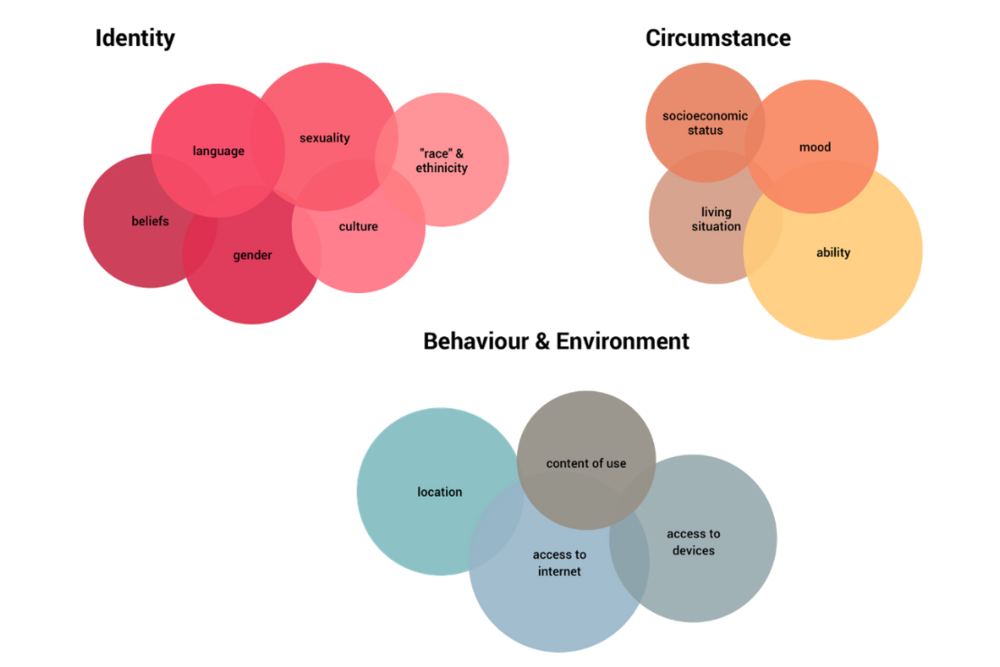The Urgency of Intersectionality in Product Design
Oct 28, 2020
In today’s globalised landscape, customer segmentation remains one of the focal points of product design and marketing. When envisioning the launch of a new product, marketers love to distil a target customer or ‘user persona’. However, collectively grouping people into a one-size-fits-all box is rarely accurate and never simple. This is one of the key fallacies that a deeper knowledge of intersectionality can help to mitigate in your product offering.
The term ‘intersectionality’ was coined by Professor Kimberlé Crenshaw who defined it as:
“Understanding the ways that multiple forms of inequality or disadvantage sometimes compound themselves and create obstacles that often are not understood in conventional ways of thinking”.
This may be a term you may have never heard of before. And that’s okay. As Alexander Leon affirmed in this LinkedIn post, there is a tendency to walk on eggshells with regards to the term even in the diversity and inclusion space. So let’s start with identifying what intersectionality is not. It is not a list of best practices that companies can inculcate and call it a day when it comes to inclusive practices. It is not a one-time check-the-box exercise.
Intersectionality is a continuous, iterative process that takes into account factors such as identity, personal circumstances, and environmental factors that can impact certain behaviours. To this end, one person can transcend several of these factors. More importantly though, these factors may be fluid in that person’s life. For example, a person who may find it difficult to read smaller text on a phone today may complete an eye operation tomorrow that can make it possible for them to use the same application they were previously unable to.

What Implications Does This Have In Our Digitalised World Of Today?
When speaking of product design and strategy, taking intersectionality and the fluidity of user traits into consideration can be the difference between sustainable success, short-term success, and failure. By having intersectional thinking guide your user experiences and human-centred designs, your products can unlock a deeper sense of connection with a wider audience instead of a narrow cross-section. However, this is easier said than done.
To embed intersectionality into a company or product’s ethos, a commitment is required from key decision-makers to establish the unique requirements of audiences that face different circumstances and environments. Once these requirements are crystallised, product managers can then assess how the different factors interact to shape the end-user experience. The last step is not a conclusive one, but the most critical one.
As aforementioned, to truly be intersectional is to recognise that products need to be evolved and iterated according to the changing circumstances and environments of their audience. By going beyond simple personas and understanding users at a behavioural and contextual level, companies can develop enhanced prototypes that allow for more authentic, long-term user engagement.
All in all, intersectionality is a complex, layered topic. Nevertheless, for businesses offering digital products to their consumers, implementing intersectional thinking is highly beneficial to understanding audiences, preventing alienation, and ultimately fostering memorable user experiences. By nature, humans cannot be placed into neat boxes. So why should the digital products of tomorrow be founded on such constricted thinking?
This article, in a slightly different form, originally appeared on Troglo's Medium.
About the Author

Christopher Badaoui
Christopher Badaoui is the CEO at Troglo, a platform redesigning sexual and reproductive health for the LGBTQ+ community. Prior to Troglo, Chris developed a passion for technology and design at Techstars and XRC Labs; Parsons New School for Design. Previously, Chris was one of the Founders of Carbyn.io a New York-based consulting company for clients such as the Assemblage and the Minnesota NFL Vikings.
